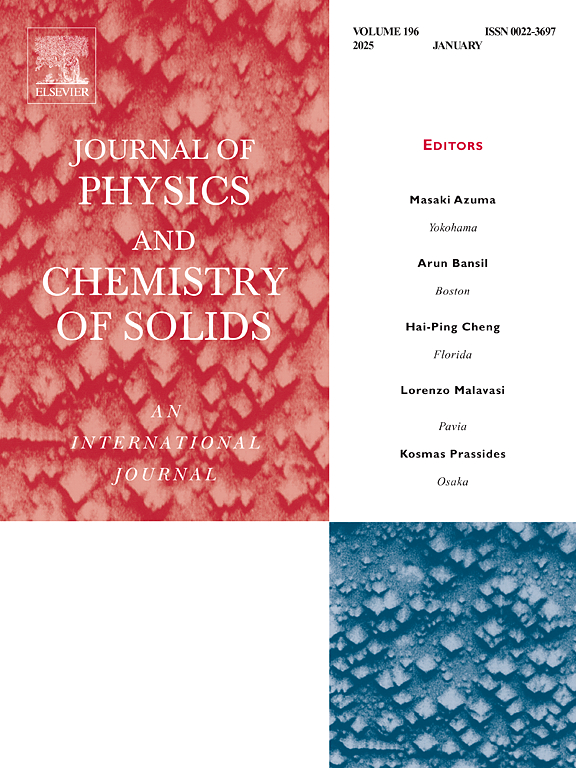Reduction process and energy transfer from Eu3+/Sm3+ co-doped Sr2MgSi2O7 phosphors by heat treatment in 100% H2 gas environment
IF 4.3
3区 材料科学
Q2 CHEMISTRY, MULTIDISCIPLINARY
引用次数: 0
Abstract
In this work, we investigate and report the reduction of Eu/Sm doped SrMgSiO material in 100% H gas. Eu/Sm doped and co-doped SrMgSiO materials were fabricated by solid-state reaction method at 1250°C. The structure and surface morphology of the prepared samples were estimated by X-ray diffraction and SEM images. The Eu and Sm singly doped samples, SrMgSiO:1.0mol% Eu (SM-1.0Eu) and SrMgSiO:1.0mol% Sm (SM-1.0Sm), were annealed in 100% H gas with different conditions of the annealing temperature and time to estimate the reduction of Eu/Sm into Eu/Sm. The result indicated that the Eu ions in SrMgSiO host lattice are well reduced into Eu as the sample was annealed in the H gas at 600°C and higher temperature, and its luminescence shows only Eu emission under excitation of 350 nm. If using the excitation of 393 nm, the Eu/Eu emission ratio of the SM-1.0Eu sample annealed in the reduction environment increases from 27% to 87% corresponding to the increase of the annealing temperature from 400°C to 700°C. These results indicate that the emission of Eu in SrMgSiO can be controlled by changing the conditions of the heat treatment in the reducing atmosphere. In contrast to Eu, Sm ions are hardly reduced into Sm, although the SM-1.0Sm sample was heated at a high temperature at 700°C for a long time (21.0 h) in the 100% H gas environment. With the difference in the reduction of Eu and Sm, the Eu/Sm co-doped SrMgSiO host lattice was also annealed in the reduction environment to investigate the change of the phosphor emission and energy transfer from Eu to Sm ions.
求助全文
约1分钟内获得全文
求助全文
来源期刊
CiteScore
7.80
自引率
2.50%
发文量
605
审稿时长
40 days
期刊介绍:
The Journal of Physics and Chemistry of Solids is a well-established international medium for publication of archival research in condensed matter and materials sciences. Areas of interest broadly include experimental and theoretical research on electronic, magnetic, spectroscopic and structural properties as well as the statistical mechanics and thermodynamics of materials. The focus is on gaining physical and chemical insight into the properties and potential applications of condensed matter systems.
Within the broad scope of the journal, beyond regular contributions, the editors have identified submissions in the following areas of physics and chemistry of solids to be of special current interest to the journal:
Low-dimensional systems
Exotic states of quantum electron matter including topological phases
Energy conversion and storage
Interfaces, nanoparticles and catalysts.

 求助内容:
求助内容: 应助结果提醒方式:
应助结果提醒方式:


